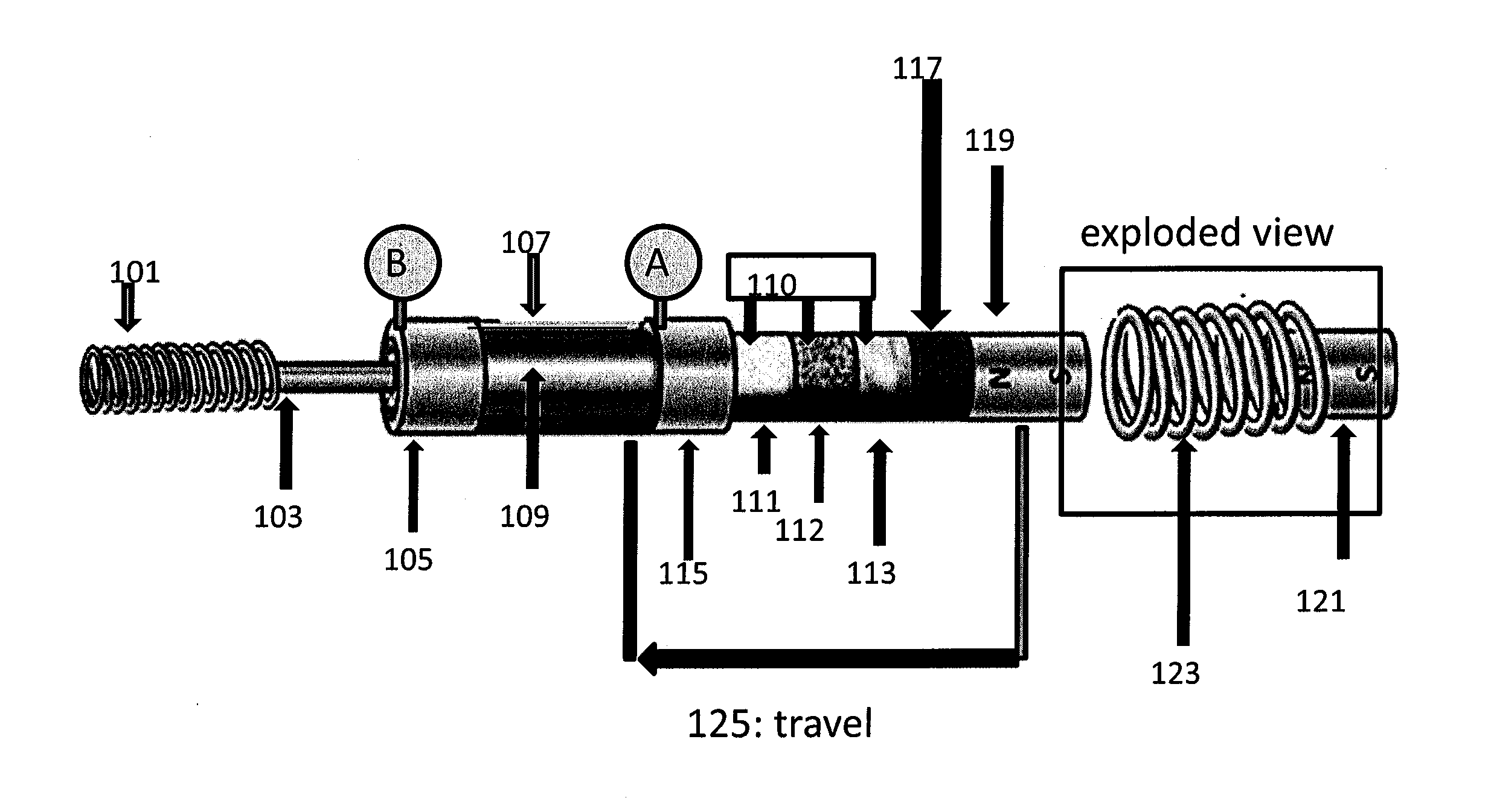Commutating Circuit Breaker
a circuit breaker and circuit technology, applied in the direction of air breakers, high-tension/heavy-dress switches, contacts, etc., can solve the problems of increased burden, impracticality large, and physical separation of electrodes
- Summary
- Abstract
- Description
- Claims
- Application Information
AI Technical Summary
Benefits of technology
Problems solved by technology
Method used
Image
Examples
case 1
(Case 1)
I(t)=Vt / L→dI / dt=V / L (3)
case 2
(Case 2)
I(t)=(V / R){1−exp[−t / (L / R)]} (4)
[0222]FIG. 18 shows a plot of these two equations for the intermediate inductance case (150 microhenries) of Example 2; up to normal full load of 2 kA, the two plots are nearly the same, but they diverge significantly at higher current, longer time. Given the very low assumed value of minimum system inductance L (1.0 microhenries), in the absence of added inductance, dI / dt (change of current with time in a dead short) is six billion amps / second. In order to limit this current rise to no more than 10 kA (starting from 2 kA, normal full load), it would be necessary to insert the first resistance at 1.33 microseconds. This is simply impossible for a mechanical system; only hybrid designs such as FIG. 15 with the very fastest types of switches (IGBT transistors or cold cathode vacuum tubes) can work in less than two microseconds as is needed if system inductance is only one microhenry. Table 3 gives the time delays for a system initially carrying ...
example 1
[0225]Consider a circuit breaker of the style of FIG. 15, in which the fast switch is a cold cathode vacuum tube of the type disclosed in U.S. Pat. No. 7,916,507 to Curtis Birnbach. Such a tube would have an on-state voltage drop of about 10 volts, which implies energy loss of about 10 / 6000 or ˜0.17% of transmitted power (better than an IGBT and not needing water cooling). This kind of tube can switch in less than 0.1 microsecond, easily commutating power to the Commutating Circuit Breaker before the current inrush passes the 10 kA maximum level, even at one microhenry inductance.
[0226]In this case, the vacuum tube is doing the “heavy lifting” and if the system inductance really is only one microhenry, then there is very little inductive energy to dissipate: only 100 joules if the current is interrupted at 10 kA, so it appears that a small capacitor or varistor could be used to absorb this energy. The advantages offered by the Commutating Circuit Breaker would be negligible in this ...
PUM
 Login to View More
Login to View More Abstract
Description
Claims
Application Information
 Login to View More
Login to View More - R&D
- Intellectual Property
- Life Sciences
- Materials
- Tech Scout
- Unparalleled Data Quality
- Higher Quality Content
- 60% Fewer Hallucinations
Browse by: Latest US Patents, China's latest patents, Technical Efficacy Thesaurus, Application Domain, Technology Topic, Popular Technical Reports.
© 2025 PatSnap. All rights reserved.Legal|Privacy policy|Modern Slavery Act Transparency Statement|Sitemap|About US| Contact US: help@patsnap.com



